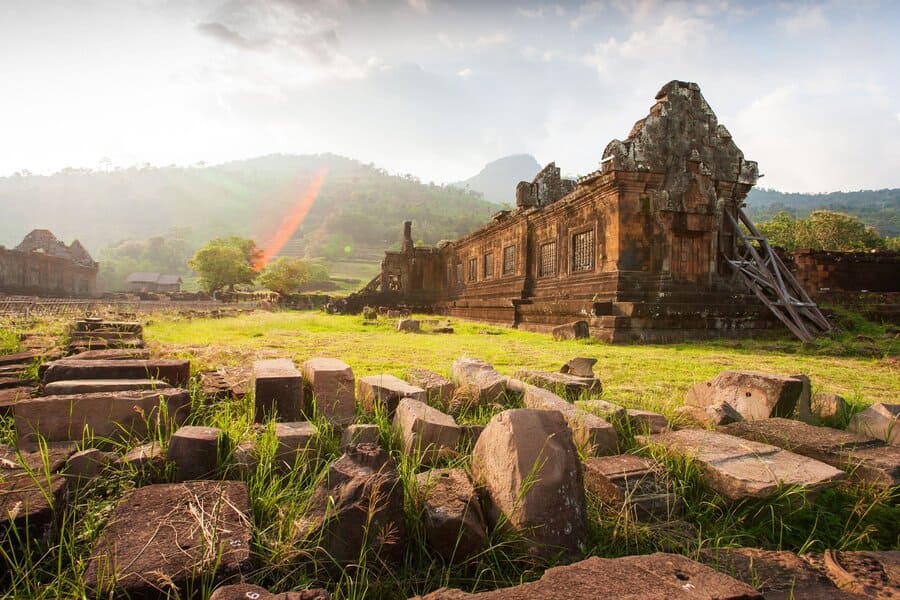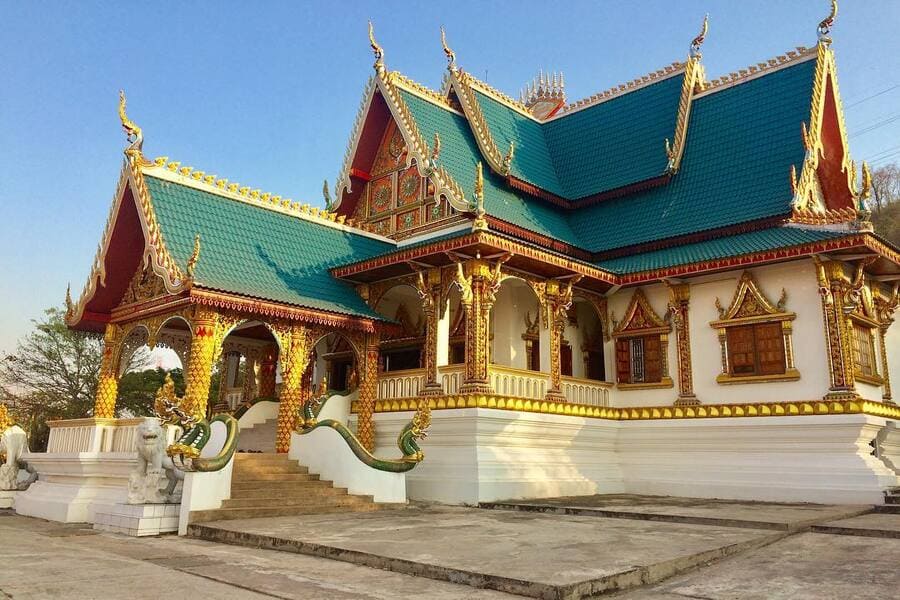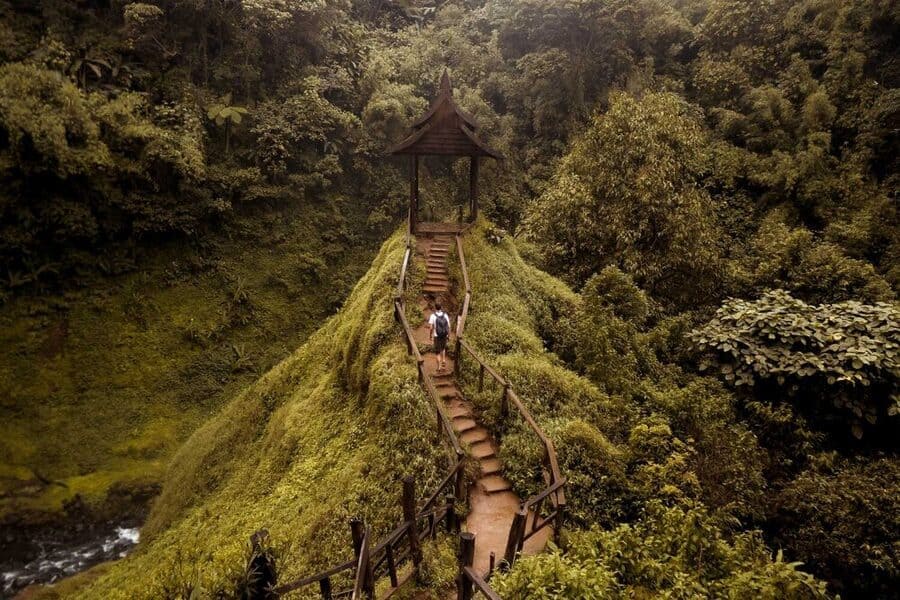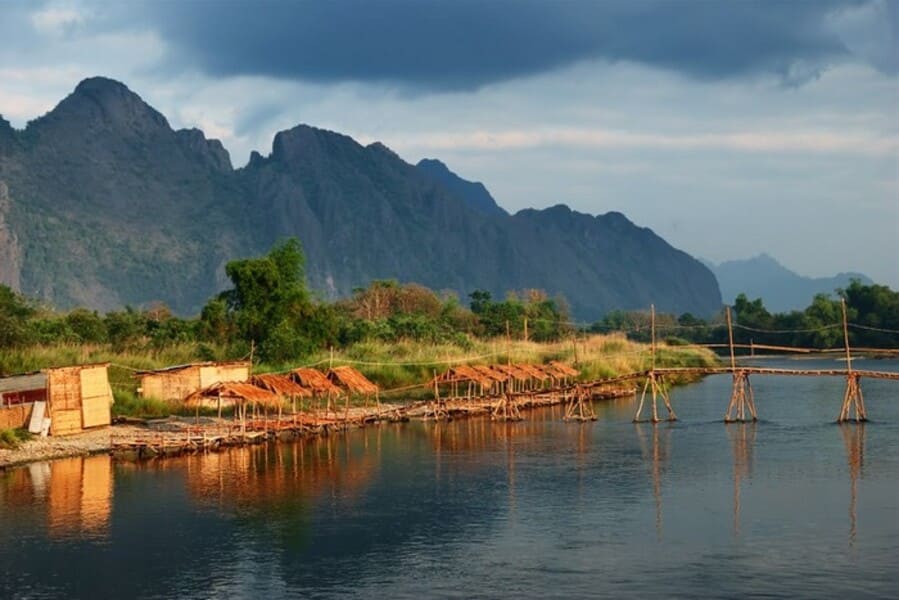Often described as a "gateway city," Pakse offers more than just a convenient stopover for people taking laos tours. This vibrant hub serves as the launchpad for exploring a treasure trove of cultural and natural wonders, from the ancient Khmer temples of Wat Phou to the verdant landscapes and cascading waterfalls of the Bolaven Plateau. So, pack your bags and get ready to embark on an unforgettable Laotian adventure, with Pakse as your trusty travel companion.
An Overview of Pakse
Pakse, often referred to as the "Gateway to the Bolaven Plateau," is a vibrant city situated in southern Laos, overlooking the majestic Mekong River. Serving as the capital of Champasak Province, Pakse is a bustling hub known for its rich cultural heritage, diverse culinary scene, and access to some of Laos' most spectacular natural wonders.
The city seamlessly blends traditional Lao charm with modern amenities, offering visitors a delightful mix of ancient temples, bustling markets, and picturesque riverfront promenades. Pakse serves as an ideal base for exploring the surrounding attractions, including the stunning waterfalls of the Bolaven Plateau, the ancient ruins of Wat Phou, and the tranquil islands dotted along the Mekong River.
With its warm hospitality, laid-back atmosphere, and strategic location, Pakse invites travelers to immerse themselves in the beauty and allure of southern Laos.
What to expect in Pakse?
- Transportation Hub: Due to its central location, Pakse is a convenient transportation hub for journeying to other parts of southern Laos. Buses, minivans, and even flights connect Pakse to popular destinations like the Bolaven Plateau, Wat Phou, Si Phan Don (Four Thousand Islands), and other charming towns.
- Cultural Charm: While not overflowing with tourist attractions, Pakse offers a glimpse into Laotian life. French colonial architecture graces some buildings, and the laid-back atmosphere allows you to soak up the local vibes. The town boasts a night market where you can find souvenirs and local delicacies.
- Base for Exploring: Pakse's true strength lies in its proximity to numerous southern Laos highlights. It serves as the jumping-off point for exploring the Bolaven Plateau, a region renowned for its coffee plantations, waterfalls, and cooler climate. You can also use Pakse as a base to visit the magnificent Khmer ruins of Wat Phou, a UNESCO World Heritage Site.
- Relaxing Atmosphere: Pakse offers a slower pace compared to busier Laotian destinations like Luang Prabang or Vientiane. This makes it a great place to unwind, explore local cafes, and experience the relaxed nature of southern Laos.
Explore Wat Phou and Bolaven Plateau in Pakse
Visit Wat Phou- a UNESCO World Heritage Site
Wat Phou is a majestic temple complex nestled amidst the lush greenery of southern Laos, renowned as a UNESCO World Heritage Site. Located at the base of Phou Kao mountain in Champasak Province, Wat Phou, meaning "Mountain Temple," is a testament to the ancient Khmer civilization's architectural and religious prowess.
Dating back to the 5th century, this archaeological site predates the famous Angkor Wat in Cambodia and stands as one of the most significant Hindu sanctuaries outside of India. The temple complex, dedicated to the Hindu deity Shiva, is a masterpiece of Khmer architecture, adorned with intricately carved sandstone structures, grand staircases, and serene courtyards. Beyond its religious significance, Wat Phou is also surrounded by breathtaking natural scenery, offering visitors a mesmerizing blend of cultural heritage and natural beauty to explore and admire.
Explore Bolaven Plateau
The Bolaven Plateau is a verdant upland region located in southern Laos, renowned for its stunning natural beauty, diverse ethnic communities, and lush coffee plantations. Spanning an area of approximately 10,000 square kilometers, this elevated plateau is characterized by its fertile volcanic soil, which supports a rich array of flora and fauna.
The plateau is named after the Bolaven ethnic group who have long inhabited the region. The Bolaven Plateau is famous for its picturesque waterfalls, including the majestic Tad Fane and Tad Lo, which cascade from towering cliffs into emerald pools below. The area's cool climate and fertile soil make it an ideal environment for cultivating a variety of crops, with coffee being the most prominent.
Visitors to the Bolaven Plateau can explore quaint villages, trek through lush jungle trails, and sample locally grown coffee at charming coffee plantations. Additionally, the plateau is home to several ethnic minority groups, each with its own unique traditions and customs, offering travelers a fascinating glimpse into Laos' cultural diversity.
Whether seeking outdoor adventures, cultural immersion, or simply a tranquil escape amidst breathtaking scenery, the Bolaven Plateau beckons with its allure and charm.
Pakse caters to various tastes. For those seeking relaxation, the nearby Si Phan Don, also known as the Four Thousand Islands, offers a tranquil escape. Dotted along the Mekong River, these islands are havens of laid-back charm, perfect for swimming, kayaking, and soaking up the sun.
Other famous destinations in Pakse
Champasak Historical Heritage Museum:
Located in Pakse, this museum provides insight into the history and culture of the Champasak region. It features exhibits on traditional crafts, artifacts from the Khmer period, and displays showcasing the region's rich heritage.
Si Phan Don (Four Thousand Islands):
While not directly in Pakse, Si Phan Don is easily accessible from the city and is a must-visit destination for travelers. This tranquil archipelago in the Mekong River is known for its laid-back atmosphere, stunning sunsets, and opportunities to see rare freshwater dolphins.
Pakse Market (Dao Heuang Market):
For a taste of local life and culture, be sure to visit Pakse's bustling market. Here you can browse through stalls selling fresh produce, handicrafts, textiles, and local delicacies.
Don Khong:
One of the largest islands in Si Phan Don, Don Khong offers visitors a glimpse of rural life in Laos. You can explore the island by bicycle or motorbike, visit traditional villages, and enjoy the peaceful riverside setting.
Don Daeng:
Another island in the Si Phan Don archipelago, Don Daeng is known for its quiet beaches, lush rice paddies, and traditional Lao villages. It's an ideal destination for relaxation and cultural immersion.
How to get to Pakse
Getting to Pakse, Laos, is relatively straightforward, with various transportation options available depending on your starting point. Here's a guide:
By Air:
Fly to Pakse International Airport (PKZ): The most convenient way to reach Pakse is by flying into Pakse International Airport. Several airlines operate flights to Pakse from neighboring countries like Thailand, Vietnam, and Cambodia, as well as from within Laos.
By Land:
- Bus or Minivan: Pakse is well-connected by road, and you can take buses or minivans from major cities like Vientiane, the capital of Laos, and other towns within Laos. Additionally, there are bus services from neighboring countries like Thailand and Cambodia.
- Private Transportation: You can also hire a private car or taxi for more flexibility and comfort, especially if you're traveling in a group or with luggage.
Best Time to Visit Pakse
The best time to visit Pakse is during the dry season, which typically runs from November to April. During this time, the weather is generally pleasant, with clear skies and lower humidity, making it ideal for outdoor activities and sightseeing. However, it's essential to note that Pakse can be visited year-round, and each season offers its unique experiences:
- Dry Season (November to April): This is the peak tourist season in Pakse, with mild temperatures and minimal rainfall, perfect for exploring the city's attractions and nearby natural wonders.
- Wet Season (May to October): While the wet season brings occasional rainfall and higher humidity, it also results in lush green landscapes and vibrant vegetation. This time is ideal for waterfall enthusiasts as the waterfalls around Pakse are at their most impressive during the wet season.
Southern Laos unfolds like a captivating storybook, and Pakse serves as the first chapter. This charming town, with its French colonial architecture, bustling markets, and laid-back atmosphere, offers a taste of what's to come. Beyond its borders lie ancient temples, verdant landscapes, and cascading waterfalls – a treasure trove of experiences waiting to be discovered. So, pack your bags, embrace the relaxed pace of Pakse, and prepare to be enchanted by the wonders that await in southern Laos.




